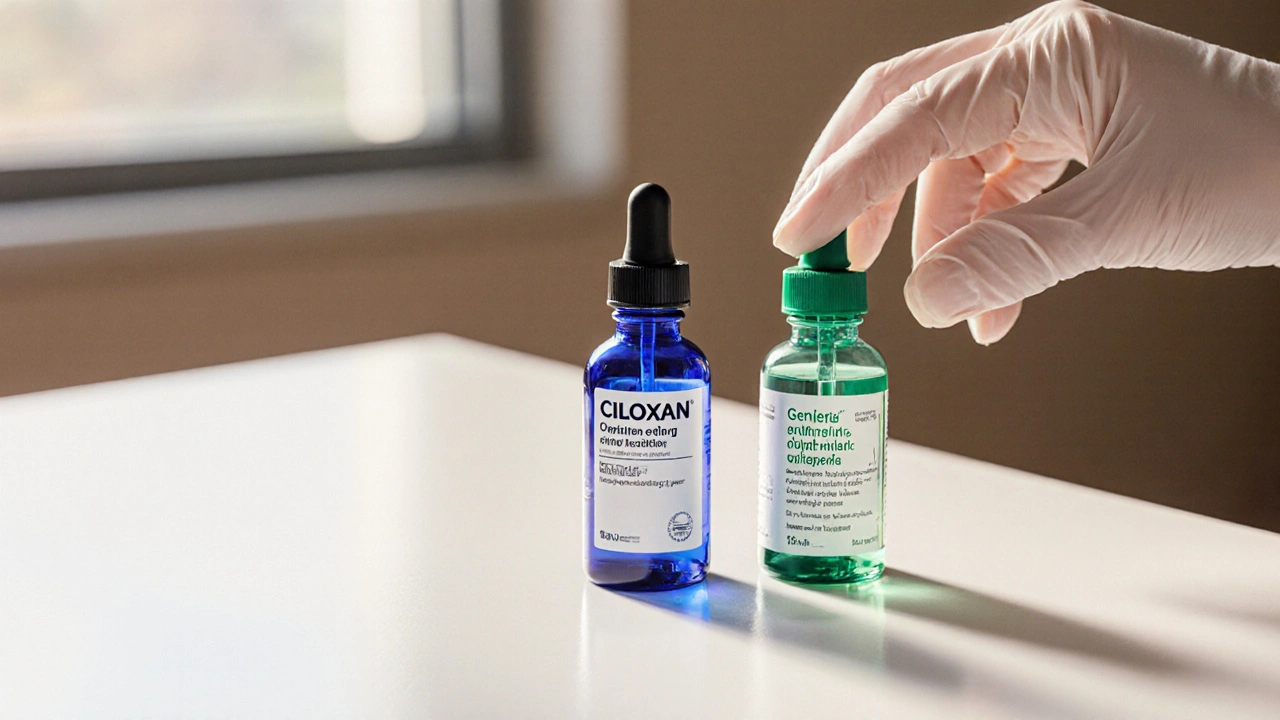
Ciloxan Ophthalmic Solution vs Top Eye‑Drop Alternatives: A Practical Comparison
A detailed side‑by‑side review of Ciloxan eye drops versus top ophthalmic antibiotics, covering efficacy, dosing, cost, side effects and when to choose each option.
When working with Eye Drops, liquid medications applied directly to the eye to treat or prevent various conditions. Also known as ocular drops, they are essential for everything from dry‑eye relief to infection control. Ocular Lubricants encompass soothing drops that mimic natural tears, while Antibiotic Eye Drops target bacterial infections. The way you obtain them often involves an Online Pharmacy, which shapes how quickly you can start treatment. In short, eye drops require the right type, proper technique, and a trustworthy source to work effectively.
Not all drops are created equal. Ocular Lubricants like carboxymethylcellulose or hyaluronic acid are best for dry‑eye syndrome, contact‑lens wearers, and postoperative comfort. Antibiotic Eye Drops such as moxifloxacin or tobramycin kick in when you have conjunctivitis or a corneal ulcer. Anti‑inflammatory drops—often steroids or non‑steroidal options—reduce swelling after surgery or control allergic reactions. Glaucoma patients rely on pressure‑lowering drops like timolol, a whole class of medications that prevent optic‑nerve damage. Each category has its own dosing schedule, storage rules, and side‑effect profile, so picking the right one matters as much as the act of applying it.
Buying the right product can be a hassle, but that’s where an Online Pharmacy shines. Our site often features guides on snagging cheap generic versions of popular drugs—think Metformin or Celebrex—so the same principles apply to eye drops. Verify the pharmacy’s license, compare prices, and read user reviews before you hit ‘order.’ Generic lubricants are usually half the price of brand names and work just as well. If you need prescription‑only drops, many licensed online providers let you upload a digital prescription and ship the medicine in discreet packaging within a day or two.
Using eye drops correctly is just as critical as getting the right bottle. Wash your hands, tilt your head back, pull down the lower lid to create a pocket, and squeeze the prescribed number of drops without touching the tip to your eye. Wait a minute before applying a second type to avoid dilution. Store them in a cool, dry place—most drops stay potent for 30 days after opening, though some preservative‑free formulas need a stricter timeline. With these basics covered, you’re set to pick the proper drop, order it safely, and apply it like a pro. Below you’ll find a curated list of articles that dive deeper into specific eye‑drop categories, buying guides, and practical tips to keep your vision clear.

A detailed side‑by‑side review of Ciloxan eye drops versus top ophthalmic antibiotics, covering efficacy, dosing, cost, side effects and when to choose each option.